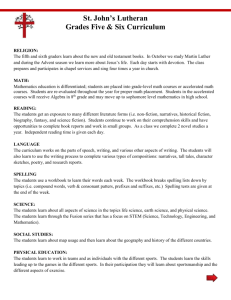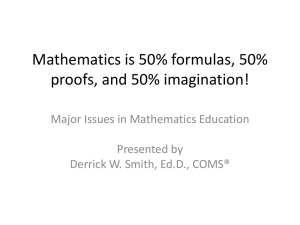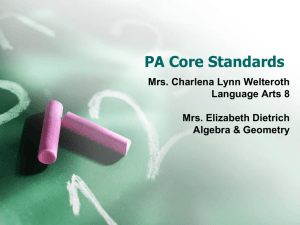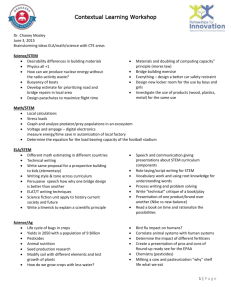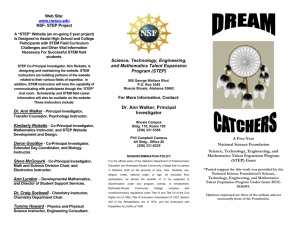STEM Advanced Placement Program
advertisement
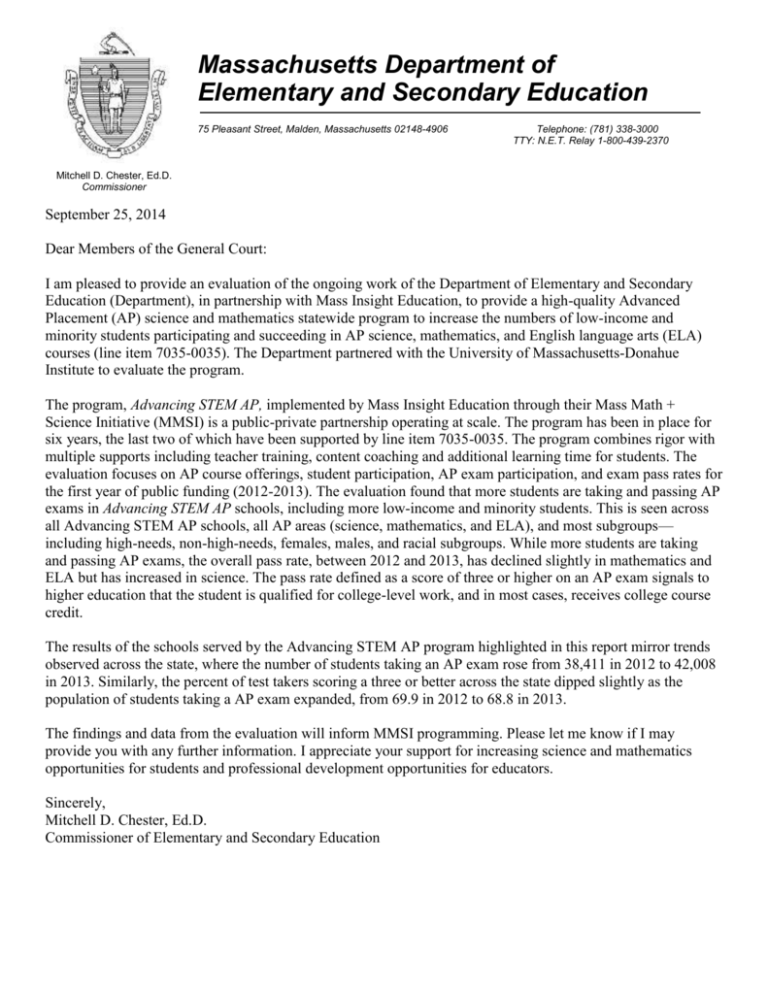
Massachusetts Department of Elementary and Secondary Education 75 Pleasant Street, Malden, Massachusetts 02148-4906 Telephone: (781) 338-3000 TTY: N.E.T. Relay 1-800-439-2370 Mitchell D. Chester, Ed.D. Commissioner September 25, 2014 Dear Members of the General Court: I am pleased to provide an evaluation of the ongoing work of the Department of Elementary and Secondary Education (Department), in partnership with Mass Insight Education, to provide a high-quality Advanced Placement (AP) science and mathematics statewide program to increase the numbers of low-income and minority students participating and succeeding in AP science, mathematics, and English language arts (ELA) courses (line item 7035-0035). The Department partnered with the University of Massachusetts-Donahue Institute to evaluate the program. The program, Advancing STEM AP, implemented by Mass Insight Education through their Mass Math + Science Initiative (MMSI) is a public-private partnership operating at scale. The program has been in place for six years, the last two of which have been supported by line item 7035-0035. The program combines rigor with multiple supports including teacher training, content coaching and additional learning time for students. The evaluation focuses on AP course offerings, student participation, AP exam participation, and exam pass rates for the first year of public funding (2012-2013). The evaluation found that more students are taking and passing AP exams in Advancing STEM AP schools, including more low-income and minority students. This is seen across all Advancing STEM AP schools, all AP areas (science, mathematics, and ELA), and most subgroups— including high-needs, non-high-needs, females, males, and racial subgroups. While more students are taking and passing AP exams, the overall pass rate, between 2012 and 2013, has declined slightly in mathematics and ELA but has increased in science. The pass rate defined as a score of three or higher on an AP exam signals to higher education that the student is qualified for college-level work, and in most cases, receives college course credit. The results of the schools served by the Advancing STEM AP program highlighted in this report mirror trends observed across the state, where the number of students taking an AP exam rose from 38,411 in 2012 to 42,008 in 2013. Similarly, the percent of test takers scoring a three or better across the state dipped slightly as the population of students taking a AP exam expanded, from 69.9 in 2012 to 68.8 in 2013. The findings and data from the evaluation will inform MMSI programming. Please let me know if I may provide you with any further information. I appreciate your support for increasing science and mathematics opportunities for students and professional development opportunities for educators. Sincerely, Mitchell D. Chester, Ed.D. Commissioner of Elementary and Secondary Education



